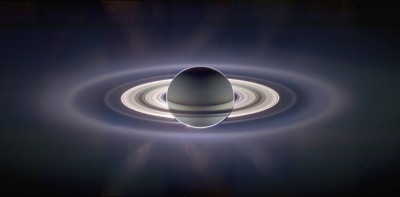
NASA’s Cassini spacecraft made a fateful plunge into the atmosphere of Saturn, ending its 13-year tour on September 15, 2017. Cassini was launched in 1997 to orbit and observe the ringed planet and its many moons. The spacecraft arrived at Saturn in 2004. NASA extended its mission twice – first for two years, and then for seven more. The second mission extension saw dozens of flybys of the planet’s icy moons, using the spacecraft’s remaining rocket propellant along the way. Cassini discovered half a dozen moons, geysers on Enceladus and lakes on Titan.
During planning for its extended missions, various future plans for Cassini were evaluated on the basis of scientific value, cost, and time. Some of the options examined included collision with Saturn atmosphere, an icy satellite, or rings; another was departure from Saturn orbit to Jupiter, Uranus, Neptune, or a centaur. Other options included leaving it in certain stable orbits around Saturn, or departure to a heliocentric orbit. Each plan required certain amounts of time and changes in velocity.
Scientific data was collected using eight of its twelve science instruments. All of the probe’s magnetosphere and plasma science instruments, plus the spacecraft’s radio science system, and its infrared and ultraviolet spectrometers collected data during the final plunge. The data rates flowing back from Saturn could not support imaging during the final plunge, so all pictures were down linked (transmitted back to Earth) and cameras were switched off, before the final plunge began. The predicted altitude for loss of signal was approximately 1,500 km (930 mi) above Saturn’s cloud tops, when the spacecraft began to tumble and burn up like a meteor.
Picture Credit : Google

